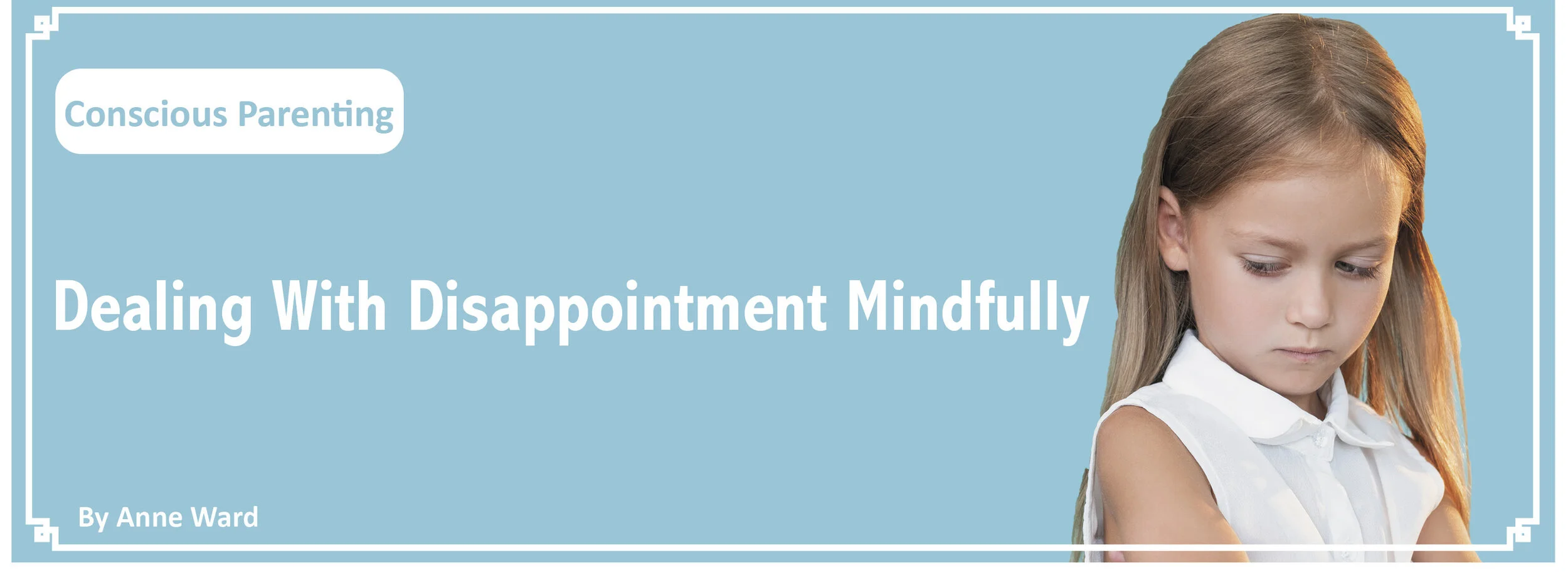By Anne Ward
Parenting is challenging. Being a parent during a pandemic is even more difficult. How can we help our children cope with the disappointments that come their way while dealing with our own?
Over the last year, Covid shutdowns have canceled many activities that our children enjoy—birthday parties, school, soccer games—even visits with grandma and grandpa. Some older children have missed milestone moments like getting a driving license, going to prom, or attending a graduation ceremony. Losing these precious times, as well as contact with friends, teachers, and other special people, has been hard on us as adults, but even more devastating to our children. How can we help our children respond to these many cancellations?
As parents, the last thing we want is to see our children disappointed. We strive to make their lives as happy and carefree as possible. It’s easy to feel sorry for our children when they go through particularly difficult times and it’s tempting to help them avoid disappointment at all costs.
We may find that our children's unpleasant emotions make us feel uncomfortable, too. Sometimes these feelings may even be "triggering" for us. However, brushing-off or ignoring our children's disappointments causes us to miss valuable opportunities to teach them how to process their emotions and build self-regulation. It also keeps our kids from learning that disappointment is a part of life.
If we can stay in the moment with our children and be available to them, we can help them build their resiliency for the next disappointment. Disappointment is a part of life, and with a few simple steps, we can help prepare our children for life's ups and downs. Here are a few suggestions to get you started:
1. Give your child time to calm down.
Allow your child time to calm himself or herself. Coloring, connecting with his or her senses, or using some deep breathing techniques will help your child get to a relaxed state. See if your child likes one of these exercises:
Belly Breathing (Young Children) – Have the child lay on their back on the bed or the floor. Place a stuffed animal on their belly. Inhale and exhale slowly, with deep breaths. Have them watch the “stuffie” on their belly rise and fall with their breath.
Square Breathing (School-age Children) – Have the child inhale and count to four. As they count, point, and trace the top of a square in the air with their index finger. Have them hold their breath while counting to four and trace one side of the square. Then exhale and count to four while tracing the bottom of the square. Finally, have them hold their breath and trace the last side of the square while counting to four. Continue tracing the square with four-count inhales, holds, and exhales.
Deep Breaths (Pre-Teen/Teenagers) – Have your child take a deep breath in, and release it fully. Repeat two more times. On the last exhale, have them release their breath fully and make a sound—a sigh, yell, roar, or whatever makes them feel better.
5-4-3-2-1 (Any Age) – Talk your child through this activity until he or she can do it independently. Say, “Name five things you can see.” Wait for your child to name five objects he or she can see in his or her current location. Next say, “Name four things you can hear.” Wait for her or his response. Say, “Name three things you can touch.” This can be the physical things your child touches where they are sitting or lying— blanket, chair, pillow—or what touches your child—the sun or a breeze. Next say, “Name two things you can smell.” And finally say, “Name one thing you can taste.” The last two parts of this exercise may be difficult to do and you may choose to stop the count after number three.
2. Help your child identify his or her feelings.
When both you and your child are calm, ask your child to describe how she/he is feeling. He or she may be feeling several things at once and need to hear from you that all of these feelings are normal and okay. Younger children may have trouble naming emotions and may prefer telling what color they are feeling. You may also want to have a mirror nearby and a poster of faces showing different emotions to support children that have trouble identifying their emotions.
3. Empathize with your child.
Listen to your child and give them your full attention. Take time to grieve with your disappointed child. Tell your child about times that you were disappointed and how those experiences made you feel. Sharing these times allows your child to see that disappointment is a normal part of life. It also validates your child’s feelings of sadness and makes it more likely that he or she will reach out again to trust others for support when feeling sad and vulnerable.
If we can fight the instinct to jump in to try to fix the situation for our children or distract them to avoid uncomfortable feelings, our children will have the opportunity to process their sadness and also learn a valuable lesson in the process—that they can go through hard things and survive. One of the best gifts we can give our children is allowing them to experience unpleasant emotions, empathizing with them, and supporting them to move through those feelings. This is how we help them to become emotionally healthy and resilient adults.
Anne Ward has taught in Ann Arbor Public Schools for nearly twenty years and has three grown children of her own. She enjoys leading her students in yoga and mindfulness. Ward can be reached at award2009@me.com.



































































































































































































For the modern toddler parent, potty training is an important—and often overwhelming—rite of passage. With an especially willful child, potty training can devolve into begging, bribing, breakdowns, and giving up. The common phrase repeated on modern mommy blogs and parenting influencers is to “wait until your toddler is ready!”